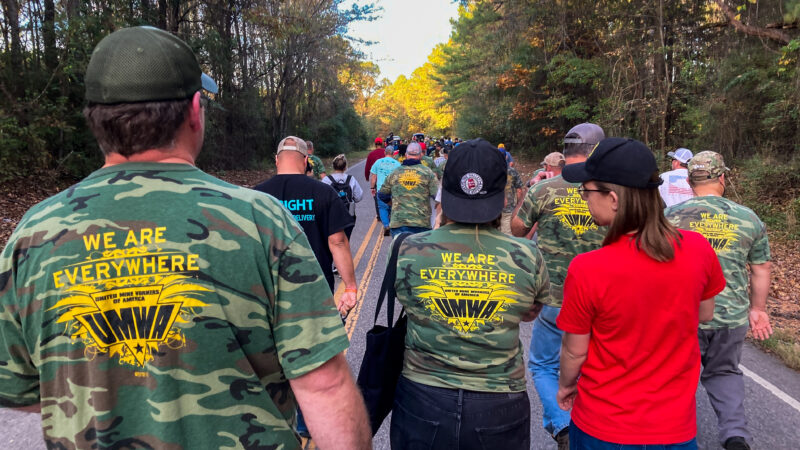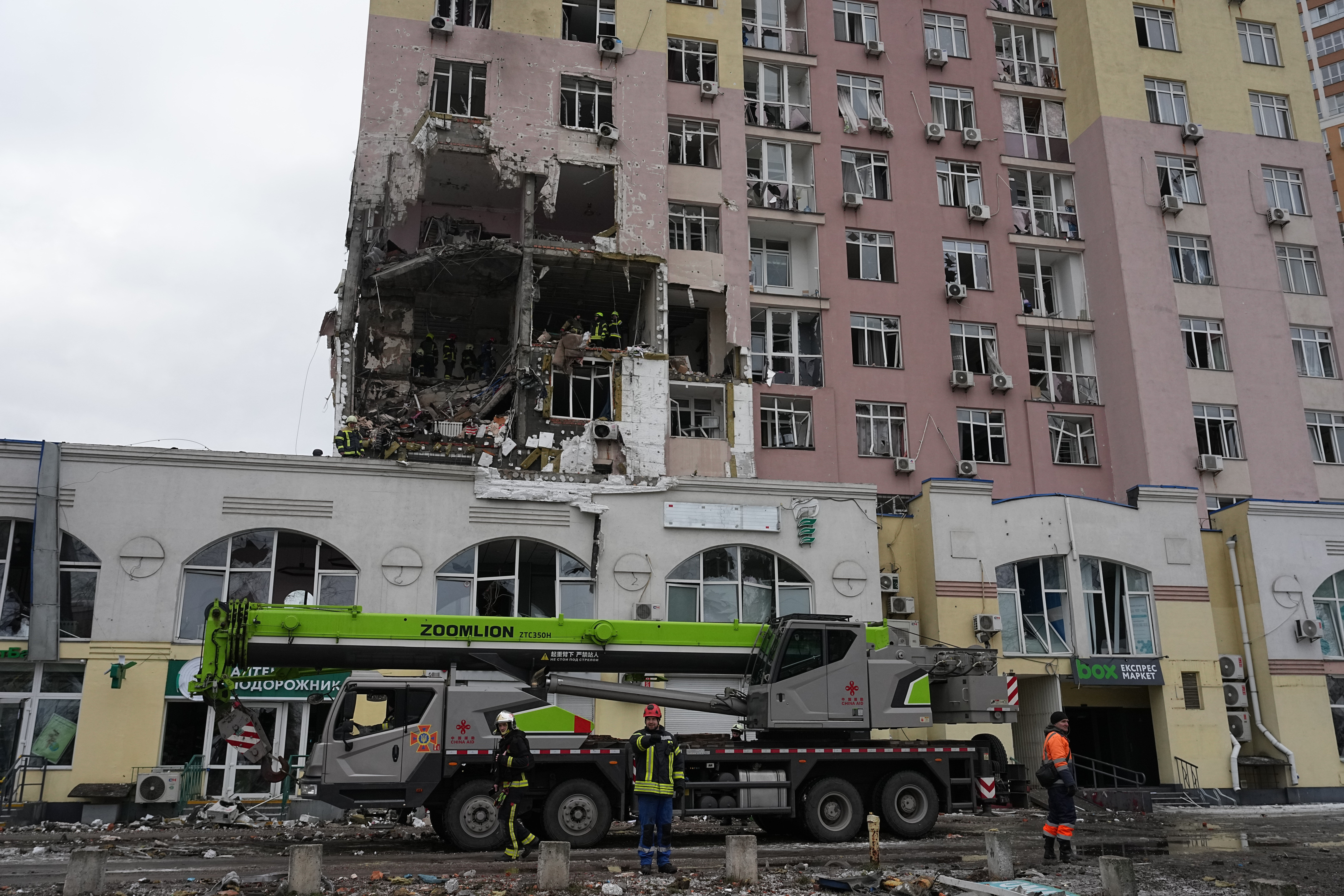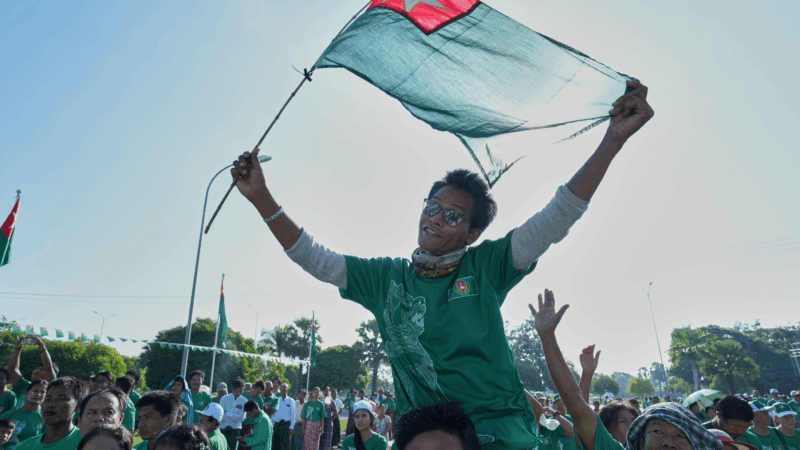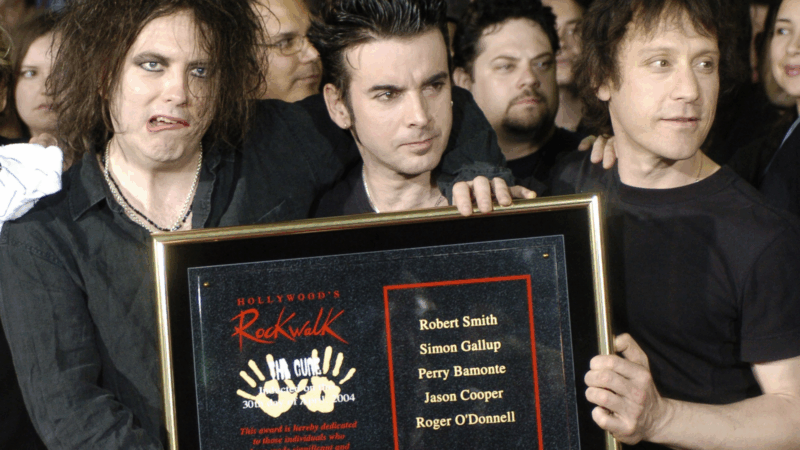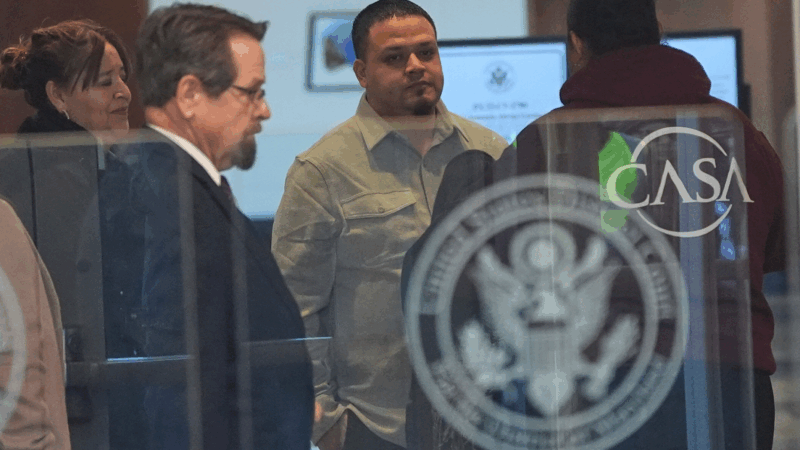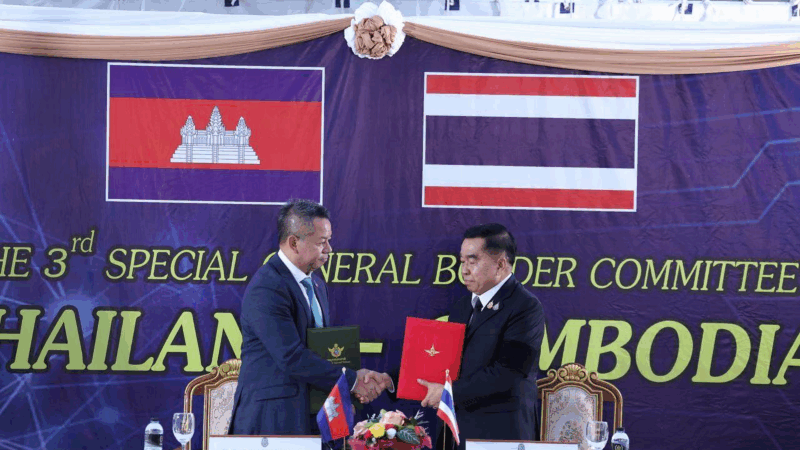As Alabama coal miners strike nears end, a look at why it started, and how it failed
Striking miners and supporters march to the entrance of one of Warrior Met Coal’s mines in Brookwood, Alabama, November 9, 2022.
After 700 days, hundreds of striking coal miners in Brookwood, Alabama will be returning to work soon — but without the better contract that they’ve been fighting to get.
The United Mine Workers of America, the union at the center of the purported longest strike in Alabama’s history, asked Warrior Met Coal to allow the miners to return to work at the company’s four locations starting Thursday. The decision was announced in a Feb. 16 press release.
“The status quo is not good for our members and their families,” said UMWA president Cecil Roberts in the statement. “I sincerely hope that Warrior Met leadership will accept this offer, get our members back to work, engage in good faith bargaining and finally sit down face-to-face with us to resolve this dispute for the betterment of all concerned.”
The union describes the decision as fighting Warrior Met Coal to a valiant draw, but the reality of the situation is closer to waving the white flag.
The two sides have been discussing what a return to work will look like and the union shared details with the miners at a meeting Wednesday evening. Here’s what you need to know about the strike, from how it started to how it’s ending.
What led to this strike?
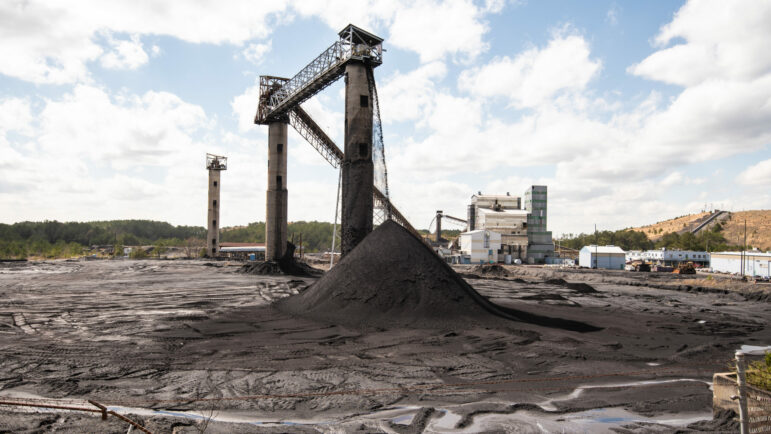
The miners demanded better pay and benefits, but the origins of this strike are tied to the price of steel.
That’s because the coal taken from these mines in Brookwood, Alabama isn’t used for energy but for making steel. In 2015, the price of steel plummeted, ending the year 44% lower than the previous year. This led the company that operated these mines at the time, Walter Energy, into bankruptcy. The mines’ debt holders then formed a new company in 2016 called Warrior Met Coal to take over.
According to the miners, Warrior Met told them that it needed to cut their pay and benefits in order to keep the mines open, and the company would look into restoring what they lost after five years. Warrior Met, however, denies making any promises to them.
After those five years passed, Warrior Met offered a roughly 11% raise to the miners, but many said that wasn’t enough; Miner Rily Hughlett said his pay was cut about 14%, but the strike was about more than just money — they also wanted more vacation time and lenient sick days.
“Even on Easter they would have us come to work,” Hughlett said. “We should have Sunday off anyways. I go to church on Sunday.”
On April 1, 2021, roughly a thousand miners officially went on strike. Miners regularly formed picket lines outside the many entrances to the Warrior Met Coal mines, stretched out over dozens of miles weaving through the backwoods of Brookwood. Miners set up grills and built makeshift shacks to protect themselves from the sun during the long hours they would be protesting. They joked together on lawn chairs between the mine’s shift changes to pass the time.
But the strike was also marked by violence. The UMWA accused replacement workers of trying to hit miners with their cars. Warrior Met Coal later released an edited video, just under four minutes long, that appeared to show multiple scenes involving miners tossing a cement block through a car’s rear window, swarming a bus full of strikebreakers and the presumed aftermath of fights that left the faces of workers bloodied. A separate video showed security camera footage of a fistfight.
A federal judge in November 2021 banned the strikers from picketing outside the mine entrances after Warrior Met cameras recorded miners attacking workers’ vehicles. The union agreed to pay $435,000 in damages to Warrior Met last fall.
Is this actually Alabama’s longest strike?

Where this work stoppage stands in the Alabama strikes record books is hard to say definitively because federal strike data is notoriously bad.
The U.S. Bureau of Labor Statistics only tracks strikes with more than a thousand workers. In fact, looking at that data would have you believe the Warrior Met Coal strike ended after a year. That’s because fewer than a thousand miners were still actively striking.
Still, some miners believe it’s the longest in the state’s history and evidence of a longer strike has yet to pop up.
How have miners lasted this long on strike?
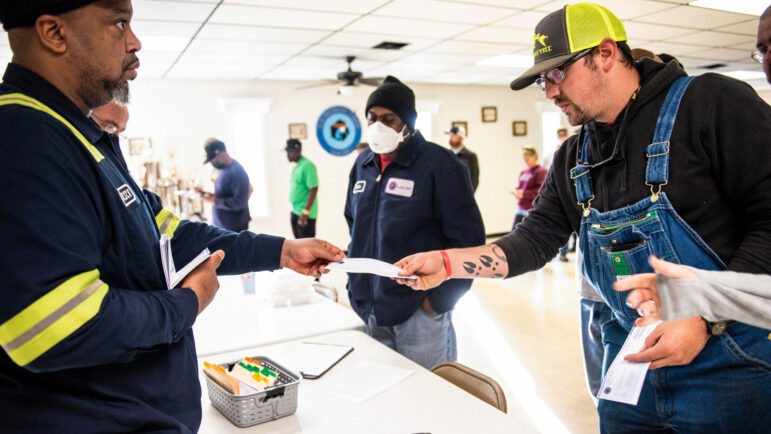
Each actively striking miner has been getting an $800 strike check from the UMWA every two weeks since the strike began.
It’s a generous amount from a union for a strike, and the UMWA’s also been covering health insurance for the miners. But the checks ultimately amount to a bit more than $20,000 a year — roughly a fifth of what the miners were making before the strike.
Other unions and supporters have also donated millions of dollars to help – they have also kept a food pantry stocked with supplies.
Perhaps the biggest help has come from the tight labor market. Miners have been able to work elsewhere during the strike — for instance, at a Mercedes-Benz plant 10 miles away or a nearby strip mine. These jobs rarely pay more than Warrior Met does, but they help many of the strikers hold out.
But not all the miners have been able to bear the financial burden of giving up six-figure paychecks. That has caused some to cross the picket line. By last November, only about half of the original thousand-or-so miners are still striking, though it’s unclear how many went back to work at Warrior Met.
Why did the strike fail?
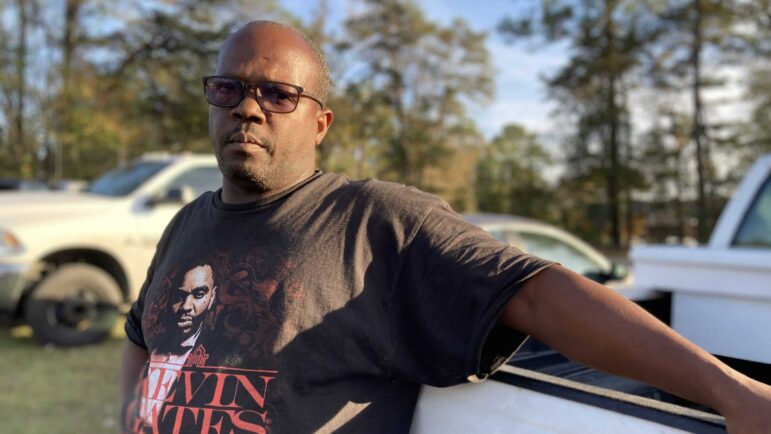
Remember what we said about this strike going back to the price of steel?
Just as the low price of steel forced the owner of these mines to go bankrupt, it has since rebounded, currently at about 250% higher than it was at the end of 2015. The high price it hit during the strike let Warrior Met Coal get through the strike while still making a profit. The union said the company could have made a lot more money without the strike, but Warrior Met still made a profit of $641.3 million last year, according to the company’s latest report.
The company was also able to recruit replacement workers, sometimes from out-of-state, to keep the mines running.
Miners also lamented that striking is not like it used to be in the 80s. Security technology like cameras and sensors weren’t as common or effective back then, so it was easier for strikers to do things like hold sit-ins and shut down workplaces. Without that, and with replacement workers in the mines, production kept going despite the strike.
What’s next?

While the union initially requested March 2 for a return, getting the miners back underground will almost certainly happen at a later date.
For starters, some of the miners will need to get recertifications and physicals before they return.
The UMWA and Warrior Met have gone back and forth over letters hashing out what a return will look like. The union presented what it knows to the strikers during a closed-door meeting on Wednesday. But while the members can give feedback, it’s ultimately the union president Cecil Roberts’ decision to end the strike.
The company is legally required to bring back all of the miners, according to the National Labor Relations Board, but it could appeal this. A major sticking point for Warrior Met, according to the union, is that it doesn’t want to take back about 40 miners it accused of either threatening or causing violence.
Warrior Met is also required to let go of any replacement workers necessary to make room for those returning. If the company delays bringing back workers, it could owe them back pay.
Contract negotiations will continue even after the miners return — though they’ll likely be doing so with significantly less leverage.
“The leverage is making the stockholders understand that you could be getting a whole lot more bang for your buck here if you use the right people to run the coal and produce more coal,” said Larry Spencer, international vice president of the United Mine Workers District 20.
This story was produced by the Gulf States Newsroom, a collaboration among Mississippi Public Broadcasting, WBHM in Alabama and WWNO and WRKF in Louisiana and NPR.
Russia attacks Kyiv, killing 1 and wounding many ahead of Ukraine-US talks
Russia attacked Ukraine's capital with missiles and drones early Saturday morning, killing one and wounding over 20 people a day before talks between Ukraine and the U.S., local authorities said.
Myanmar is set to hold phased elections. Here’s why they’re being called a ‘sham’
Myanmar's military rulers are holding a general election in phases starting Dec. 28 amid the country's civil war. The head of the U.N. says the vote will be anything but free and fair.
Perry Bamonte, guitarist and keyboardist for The Cure, dies at 65
Perry Archangelo Bamonte, longtime guitarist and keyboardist for the influential goth band The Cure, has died. He was 65. The band announced his death on their official website on Friday.
Judge to hold hearing on whether Kilmar Abrego Garcia is being vindictively prosecuted
A federal judge this week canceled the trial of Kilmar Abrego Garcia, and scheduled a hearing on whether the prosecution is being vindictive in pursuing a human smuggling case against him.
Thailand and Cambodia sign new ceasefire agreement to end border fighting
In addition to ending fighting, the agreement calls for no further military movements by either side and no violations of either side's airspace for military purposes.
Top Instagram reels from Goats and Soda in 2025: Plumpy’Nut, aid cuts, soccer grannies
Our most-viewed Instagram videos include reports from a Rhode Island factory that makes special food for malnourished children and from a tournament for soccer-playing "grannies."

